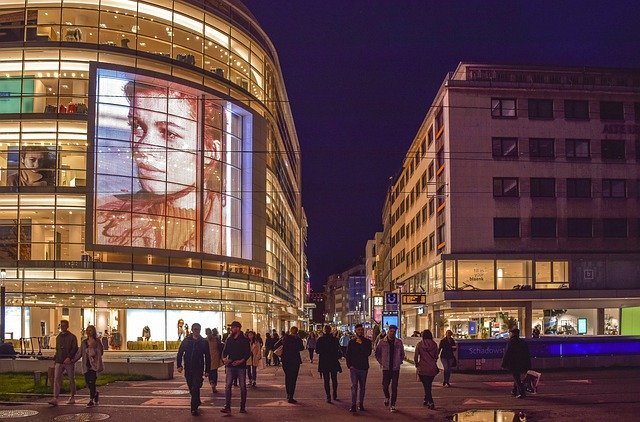
This batch of tips is a great starting point for novice photographers to learn valuable skills and tactics. The collection of tips compiled in this article can help an eager novice transform into a professional photographer.
You should create depth and perspective when photographing landscapes. Have a person or an object in the foreground to provide an idea of scale for your image. A small aperture, usually smaller than f/8 in many digital cameras and f/16 for SLR’s, allows greater sharpness throughout the entire picture.
Dslr Camera
When deciding which of your pictures to show or put on display, choose the absolute best shots you have. Avoid showing every photo you have taken of a particular subject. It can be boring seeing the same things multiple times. Look for ways to highlight different facets of your photographs as you inject each image with a fresh take.
As you advance in your photography skills and find that it is becoming a serious endeavor for you, you will probably want to invest in a dSLR camera. This camera is a single-lens reflex digital camera and shows the subject as the photograph is being shot. You might want to buy a full-frame DSLR camera, you will then be able to get detailed photographs.
You are permitted to move your subject in order to discover a unique shot. Try interesting angles such as shooting from above, underneath, moving from side to side of the subject, or holding the camera at waist level.
When preparing to shoot, you should hold your camera close to your trunk and grip it firmly on the sides and bottom. Doing so should reduce shaking and lead to clear images. Holding the camera from the bottom and underneath the lens also helps prevent dropping your camera accidentally.
Try out different approaches to scale, expressions and perspectives. An otherwise ordinary subject can appear quite artful if placed in an environment where it appears drastically disproportionate in size or humorously out of place. Putting an object somewhere creative can help something familiar look very unique.
Take this tip into consideration! Educate yourself on what shutter speed is and how to manipulate it. The shutter speed settings you will find on your camera are: P,M,A & S. The “P” on the camera represents program mode. This function is for your camera to automatically detect various aspects of lighting and will adjust the shutter speed and aperture for you. If you are unclear what settings you want to apply, just use “P” setting.
If shooting for a wedding, warm up first by shooting artistic shots with small details in them. For example, such shots could include floral designs, or catching a candid image of someone. Candid shots can sometimes result in a very special photo.

Pictures of off-beat and smaller objects can be a fun addition to your travel scrapbook. These pictures will often bring back more memories than a picture of a landscape would. Whether it is a laughable street sign or the stub of a bus ticket, every picture will have memories associated with it.
Do you need pictures of subjects that are soaked or misted with rain? You can create a similar effect by using a spray bottle to gently mist the object with water.
Focus your camera with the subject in the middle and then shift it to the left or right before taking the picture. Centering is generally expected and not that interesting in a photo. If you off-center your shots, your viewers will find them much more enjoyable.
Make sure you frame all of your shots. Sometimes, a natural frame is better than an artificial frame like wood or metal. Consider looking at the environment you’re photographing in and using elements of nature to frame your shot. Doing so can help to improve composition.
ISO, shutter speed and aperture are important settings, and you may have to try different settings for the best results. Together, these features interact to determine the photograph’s exposure levels. You want to avoid either overexposing or underexposing a picture except in some special cases. Play around with the features to judge how they work together. Use the combination you like the best depending on the environment.
As a photographer you must learn to properly use your camera’s ISO functions. Setting the ISO at a higher level increase the grain and noise of your photograph. Increased grain can make a shot look terrible.
When you are first starting out in photography and want learn how to take great pictures, learning about proper composition is key. Composition is important in most art forms. Without a good composition, your pictures will look dull. Take the time to learn and implement different types of composition to improve the overall quality of your photographs.
Try creating a silhouette in your photo. Of course the classic silhouette uses the sunset as a backdrop; however, there are other ways to get the same effect. One way to have a silhouette appear is by choosing a background that is much brighter than your subject. You can establish artificial light in the background or position your subject before a source of light, such as a window, if you want to create a silhouette image. Keep in mind that outlines on a face or body may highlight some unpleasant features.
With any luck, you now know how to take better photos thanks to these tips. This article was constructed to give you the best information on how you can hone your own photography skills and be the envy of all who look at them.
Filters work as extensions of your lenses. You screw them on the lens. They are useful because they’re are multi-purpose. UV filters are generally the most used type of filter. This will help your lenses from coming in contact with direct sun. It may also protect the lens from scratches or scuffs caused by dropping the camera.


